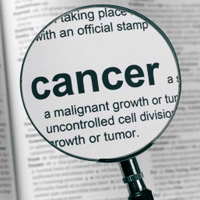Specialist management of testicular cancer: Report of the last 10 years at a Portuguese tertiary referral academic centre

Accepted: March 5, 2021
All claims expressed in this article are solely those of the authors and do not necessarily represent those of their affiliated organizations, or those of the publisher, the editors and the reviewers. Any product that may be evaluated in this article or claim that may be made by its manufacturer is not guaranteed or endorsed by the publisher.
Objectives: To describe our experience on testicular cancer (TC) management, underlining the clinical/pathological scope, administered treatments, outcomes, and challenges. TC incidence is rising globally. The predominant histology is germ cell tumour (GCT). In most patients, orchiectomy is curative. Still, a significant proportion of patients will need further tailored treatment. Specialist Reference Centres have proven themselves successful in this setting. Published data regarding TC in Northern Portugal is lacking.
Methods: Retrospective review of consecutive TC patients at a specialist tertiary referral academic centre between January 2010 and December 2020. Statistical analysis was performed using the STATA® version 13.1 software. Multivariate logistic and survival analyses were performed.
Results: 125 patients met the inclusion criteria. The median age is 35 (28-40) years; 19% of patients had risk factors for TC – infertility being the most common (11%); 50% of patients wanted sperm cryopreservation prior to treatment; 68% of patients had stage I GCT, 16% stage II, and 17% stage III. Compared to seminoma, non-seminomatous GCT were associated with younger age (p < .001) and higher stages at diagnosis (p = .02); 24% of stage IA/B GCT underwent adjuvant chemotherapy; 47% of patients with metastatic GCT at presentation had refractory disease, requiring tailored treatment. The median follow-up time is 33 (13-65) months. There was no late relapse. The 5-year OS rate is 98.0%. The 5-year survival of metastatic disease is 95.8%.
Conclusions: Despite contemporary excellent cure rates, the challenges of testicular cancer management still endure, especially in advanced stages. Therefore, public awareness is recommended, in order to avoid late presentations - special attention should be given to those who have known risk factors. The existence of Reference Centres is of paramount importance in order to achieve the best outcomes possible.
Albers P, Albrecht W, Algaba F, et al. Guidelines on Testicular Cancer: 2015 Update. Eur Urol. 2015; 68:1054-68. DOI: https://doi.org/10.1016/j.eururo.2015.07.044
Gurney JK, Florio AA, Znaor A, et al. International trends in the incidence of testicular cancer: lessons from 35 years and 41 countries. Eur Urol. 2019; 76:615-23. DOI: https://doi.org/10.1016/j.eururo.2019.07.002
Kreiberg M, Bandak M, Lauritsen J, et al. Psychological stress in long-term testicular cancer survivors: a Danish nationwide cohort study. J Cancer Surviv. 2020; 14:72-9. DOI: https://doi.org/10.1007/s11764-019-00835-0
Skakkebaek NE. Testicular dysgenesis syndrome. Horm Res. 2003; 60 Suppl 3:49. DOI: https://doi.org/10.1159/000074499
Kharazmi E, Hemminki K, Pukkala E, et al. Cancer risk in relatives of testicular cancer patients by histology type and age at diagnosis: a joint study from five nordic countries. Eur Urol. 2015; 68:283-9. DOI: https://doi.org/10.1016/j.eururo.2014.12.031
Schaapveld M, van den Belt-Dusebout AW, Gietema JA, et al. Risk and prognostic significance of metachronous contralateral testicular germ cell tumours. Br J Cancer. 2012; 107:1637-43. DOI: https://doi.org/10.1038/bjc.2012.448
Park JS, Kim J, Elghiaty A, Ham WS. Recent global trends in testicular cancer incidence and mortality. Medicine (Baltimore). 2018; 97:e12390. DOI: https://doi.org/10.1097/MD.0000000000012390
Williamson SR, Delahunt B, Magi-Galluzzi C, et al. The World Health Organization 2016 classification of testicular germ cell tumours: a review and update from the International Society of Urological Pathology Testis Consultation Panel. Histopathology. 2017; 70:335-46. DOI: https://doi.org/10.1111/his.13102
Moul JW. Timely diagnosis of testicular cancer. Urol Clin North Am. 2007; 34:109-17; abstract vii. DOI: https://doi.org/10.1016/j.ucl.2007.02.003
Mead GM, Stenning SP. The International Germ Cell Consensus Classification: a new prognostic factor-based staging classification for metastatic germ cell tumours. Clin Oncol (R Coll Radiol). 1997; 9:207-9. DOI: https://doi.org/10.1016/S0936-6555(97)80001-5
Hoffmann R, Plug I, McKee M, et al. Innovations in health care and mortality trends from five cancers in seven European countries between 1970 and 2005. Int J Public Health. 2014; 59:341-50. DOI: https://doi.org/10.1007/s00038-013-0507-9
Oechsle K, Lorch A, Honecker F, et al. Patterns of relapse after chemotherapy in patients with high-risk non seminomatous germ cell tumor. Oncology. 2010; 78:47-53. DOI: https://doi.org/10.1159/000292358
Collette L, Sylvester RJ, Stenning SP, et al. Impact of the treating institution on survival of patients with "poor-prognosis" metastatic nonseminoma. European Organization for Research and Treatment of Cancer Genito-Urinary Tract Cancer Collaborative Group and the Medical Research Council Testicular Cancer Working Party. J Natl Cancer Inst. 1999; 91:839-46. DOI: https://doi.org/10.1093/jnci/91.10.839
De Toni L, Sabovic I, Cosci I, et al. Testicular Cancer: Genes, Environment, Hormones. Front Endocrinol (Lausanne). 2019; 10:408. DOI: https://doi.org/10.3389/fendo.2019.00408
Kim I, Young RH, Scully RE. Leydig cell tumors of the testis. A clinicopathological analysis of 40 cases and review of the literature. Am J Surg Pathol. 1985; 9:177-92. DOI: https://doi.org/10.1097/00000478-198503000-00002
Astigueta JC, Abad-Licham MA, Agreda FM, et al. Spontaneous testicular tumor regression: case report and historical review. Ecancermedicalscience. 2018; 12:888. DOI: https://doi.org/10.3332/ecancer.2018.888
Miller KD, Nogueira L, Mariotto AB, et al. Cancer treatment and survivorship statistics, 2019. CA Cancer J Clin. 2019; 69:363-85. DOI: https://doi.org/10.3322/caac.21565
Akan S, Ediz C, Tavukcu HH, et al. The Clinical Significance of Seminoma Component in Testicular Mixed Germ Cell Tumour. Urol Int. 2020; 104:489-96. DOI: https://doi.org/10.1159/000506780
PAGEPress has chosen to apply the Creative Commons Attribution NonCommercial 4.0 International License (CC BY-NC 4.0) to all manuscripts to be published.


 https://doi.org/10.4081/aiua.2021.2.153
https://doi.org/10.4081/aiua.2021.2.153



